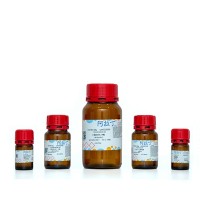研究发现3个决定眼球颜色基因座
互联网
最近,荷兰科学家识别出三个新的遗传位点,这些位点与人类眼睛颜色的细微差别有关。
这项研究是由荷兰鹿特丹伊拉斯姆斯大学医学院的Manfred Kayser负责,研究结果发布在5月6日的PLoS Genetics杂志上。
先前关于人类眼睛颜色的遗传学研究使用大致的信息特点进行分类,比如蓝色,绿色,棕色。实际上,人类眼睛的颜色是连续变化的,可以从从最浅的蓝色到最深的棕色。
在这项关于人类眼睛颜色的基因组范围研究中,科学家使用高分辨全眼成像对大约6000名鹿特丹人的眼睛颜色进行数字量化。研究人员表示,这个定量研究方法是经济,便捷,而且高效的,结果表明相比于之前描述的眼睛颜色分类,人类的眼睛呈现出更多的颜色变化。
在这项研究中,科学家识别了3个与眼睛颜色变化相关的新位点。其中一个是LYST基因,该基因之前被认为是老鼠和黄牛中的一个色素基因。另外的两个位点之前还没有研究发现其与色素相关。
新发现的这三个基因,与之前识别的一些基因,能够共同解释50%以上的眼睛颜色差异,这项研究代表了目前最精准的量化人类特征的基因组预测分析。Kayser解释说,在未来这项发现同样能够应用于法医学检测,有助于案情的侦破。
点击此处了解更多
Digital Quantification of Human Eye Color Highlights Genetic Association of
Three New Loci
Fan Liu1, Andreas Wollstein 1,2, Pirro G. Hysi 3, Georgina A. Ankra-Badu 3, Timothy D. Spector 3, Daniel Park 4, Gu Zhu 4, Mats Larsson4, David L. Duffy4, Grant W. Montgomery4, David A. Mackey5, Susan Walsh1, Oscar Lao1, Albert Hofman6, Fernando Rivadeneira 6,7, Johannes R. Vingerling 6,8, André G. Uitterlinden 6,7, Nicholas G. Martin4, Christopher J. Hammond3,
Manfred Kayser1
1 . Department of Forensic Molecular Biology, Erasmus University Medical Center, Rotterdam, The Netherlands,
2 . Cologne Center for Genomics (CCG), University of Cologne, Cologne, Germany,
3 . Department of Twin Research and Genetic Epidemiology, King's College London, London, United Kingdom,
4 . Queensland Institute of Medical Research, Brisbane, Australia,
5 . Centre for Ophthalmology and Visual Science, Lions Eye Institute, University of Western Australia, Perth, Australia,
6 . Department of Epidemiology, Erasmus University Medical Center, Rotterdam, The Netherlands,
7 . Department of Internal Medicine, Erasmus University Medical Center, Rotterdam, The Netherlands,
8 . Department of Ophthalmology, Erasmus University Medical Center, Rotterdam, The Netherlands
【Abstract】Previous studies have successfully identified genetic variants in several genes associated with human iris (eye) color; however, they all used simplified categorical trait information. Here, we quantified continuous eye color variation into hue and saturation values using high-resolution digital full-eye photographs and conducted a genome-wide association study on 5,951 Dutch Europeans from the Rotterdam Study. Three new regions, 1q42.3, 17q25.3, and 21q22.13, were highlighted meeting the criterion for genome-wide statistically significant association. The latter two loci were replicated in 2,261 individuals from the UK and in 1,282 from Australia. The LYST gene at 1q42.3 and the DSCR9 gene at 21q22.13 serve as promising functional candidates. A model for predicting quantitative eye colors explained over 50% of trait variance in the Rotterdam Study. Over all our data exemplify that fine phenotyping is a useful strategy for finding genes involved in human complex traits.
点击此处参与论坛讨论
![十二烷基二甲基(3-磺丙基)氢氧化铵内盐 [用于生化研究],14933-08-5,≥98%,阿拉丁](https://img1.dxycdn.com/p/s14/2024/0619/475/6370229598169633081.jpg!wh200)






